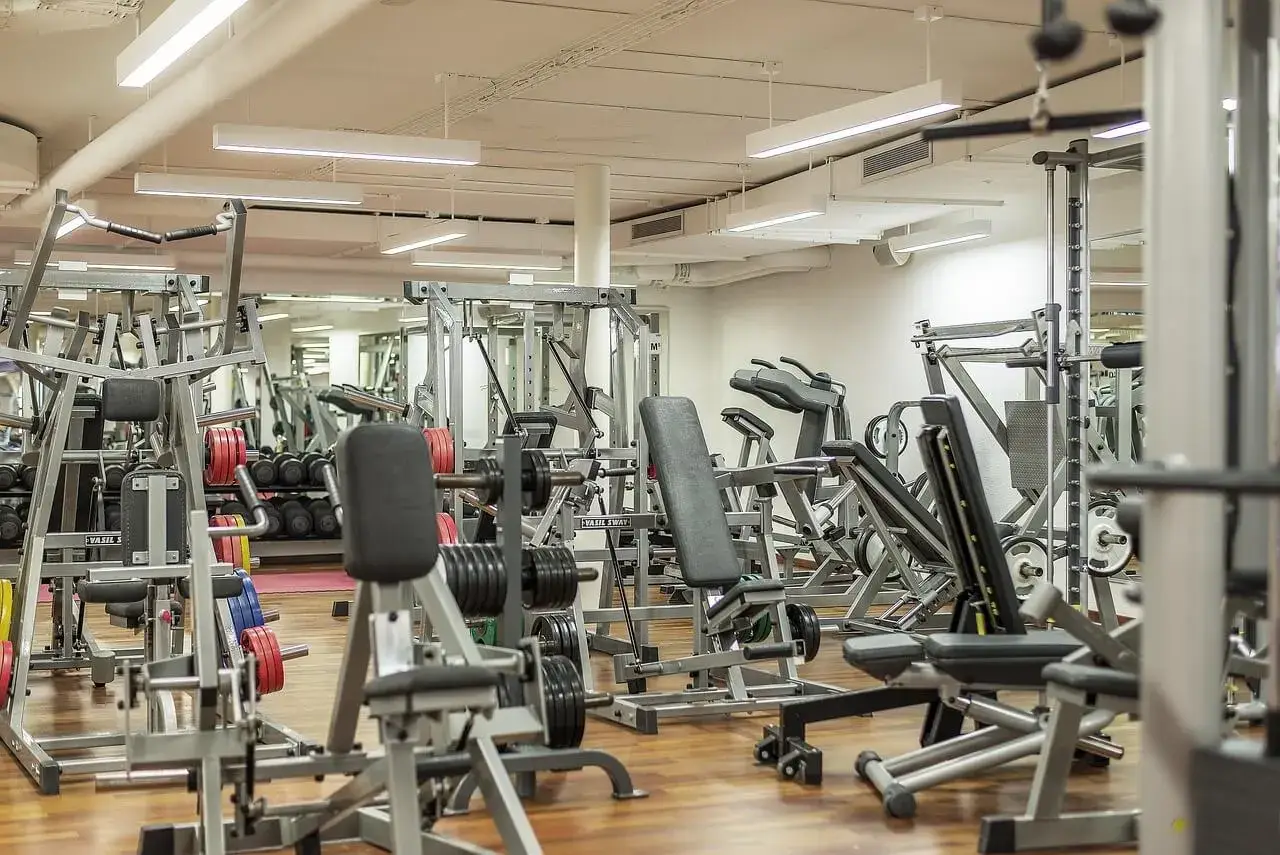
Beginner’s Guide to the Gym: Starting your fitness journey is a powerful decision—one that can transform not just your body, but your mindset and lifestyle. Yet for many first-timers, stepping into the gym feels like entering a foreign land. Rows of machines, unfamiliar exercises, and seasoned lifters can be intimidating. Without the right guidance, it’s easy to fall into habits that hinder progress or even lead to injury.
That’s why this beginner’s guide to the gym exists: to help you navigate the noise, avoid common mistakes, and build a strong foundation from day one. Backed by expert advice and scientific research, this guide breaks down the essential do’s and don’ts every beginner should know. Whether your goal is to build muscle, lose fat, boost energy, or simply feel better, these tips will help you train smarter, stay safe, and create habits that last.
✅ DO: Have a Plan Before You Walk In
Why it matters: Wandering aimlessly from machine to machine wastes time and leads to inconsistent results.
What to do: Choose a beginner-friendly workout split—like full-body workouts three times a week—and stick to it. Use apps like Fitbod, StrongLifts, or Jefit to track your progress and stay accountable.
🔬 Research Insight: A study published in Psychology of Sport and Exercise found that individuals with structured workout plans were significantly more consistent and motivated than those without one.
❌ DON’T: Copy What Everyone Else Is Doing
Why it matters: What works for someone else may not suit your goals, body type, or experience level.
What to avoid: Mimicking advanced lifters or influencers without understanding the purpose behind their routines.
🔬 Research Insight: According to Sports Medicine, personalized training programs are more effective than generalized routines, especially for beginners.
✅ DO: Focus on Form Over Weight
Why it matters: Proper form ensures you’re targeting the right muscles and protecting your joints.
What to do: Start with light weights and master the movement. Use mirrors, record yourself, or ask a trainer for feedback.
🔬 Research Insight: The Journal of Biomechanics confirms that poor form increases joint stress and reduces muscle activation, leading to injury and poor results
❌ DON’T: Skip the Warm-Up
Why it matters: Cold muscles are more prone to injury and perform less efficiently.
What to do: Spend 5–10 minutes on light cardio and dynamic stretches (e.g., leg swings, arm circles).
🔬 Research Insight: A study in The Journal of General Physiology found that warming up enhances calcium release in muscle fibers, improving contraction efficiency and reducing injury risk.
✅ DO: Start Light and Progress Gradually
Why it matters: Your body needs time to adapt to new stress.
What to do: Use progressive overload—gradually increase weight, reps, or sets over time.
🔬 Research Insight: The Journal of Strength and Conditioning Research emphasizes that gradual progression leads to safer, more sustainable gains.
❌ DON’T: Train Every Day Without Rest
Why it matters: Muscles grow during recovery, not during workouts.
What to do: Schedule 1–2 rest days per week and prioritize sleep, hydration, and nutrition.
🔬 Research Insight: Medicine & Science in Sports & Exercise highlights that rest is essential for muscle repair, glycogen replenishment, and hormonal balance.
✅ DO: Set Realistic Expectations
Why it matters: Unrealistic goals can lead to frustration and quitting.
What to do: Set SMART goals (Specific, Measurable, Achievable, Relevant, Time-bound) and track small wins—like improved energy, better sleep, or increased reps.
🔬 Research Insight: Behavioral studies show that celebrating small milestones boosts long-term motivation and adherence to fitness routines.
❌ DON’T: Neglect Nutrition and Hydration
Why it matters: Your body needs fuel to perform and recover.
What to do: Eat balanced meals with protein, complex carbs, and healthy fats. Stay hydrated before, during, and after workouts.
🔬 Research Insight: The International Journal of Sport Nutrition and Exercise Metabolism found that proper nutrition significantly enhances performance and recovery in resistance training.
✅ DO: Track Your Progress
Why it matters: Tracking helps you stay accountable and see how far you’ve come.
What to do: Use a fitness journal or app to log workouts, weights, reps, and how you feel after each session.
🔬 Research Insight: A study in JMIR mHealth and uHealth found that self-monitoring through apps or journals improves adherence and outcomes in fitness programs.
❌ DON’T: Compare Yourself to Others
Why it matters: Everyone starts at a different level, and comparison can lead to discouragement.
What to avoid: Measuring your progress against others instead of your own improvements.
🔬 Research Insight: According to The Journal of Health Psychology, social comparison in fitness environments can negatively impact self-esteem and motivation
✅ DO: Ask for Help When Needed
Why it matters: Learning proper technique early prevents injury and builds confidence.
What to do: Don’t hesitate to ask gym staff or certified trainers for guidance. Most are happy to help beginners.
🔬 Research Insight: Studies show that beginners who receive professional instruction are more likely to stick with their programs and achieve better results.
❌ DON’T: Rely Only on Machines
Why it matters: Machines can limit your range of motion and don’t always mimic real-life movement patterns.
What to do: Incorporate free weights and bodyweight exercises to build functional strength and coordination.
🔬 Research Insight: Research in Strength and Conditioning Journal suggests that free weights activate more stabilizing muscles and improve balance and coordination compared to machines.
✅ DO: Balance Cardio and Strength Training
Why it matters: Both are essential for overall health and fitness.
What to do: Aim for at least two strength sessions and 150 minutes of moderate cardio per week, as recommended by the World Health Organization.
🔬 Research Insight: Combining cardio and resistance training improves cardiovascular health, metabolic rate, and body composition more effectively than either alone.
❌ DON’T: Ignore Mental Health and Motivation
Why it matters: Your mindset plays a huge role in consistency and progress.
What to do: Practice self-compassion, celebrate small wins, and find a workout style you enjoy.
🔬 Research Insight: A study in Frontiers in Psychology found that intrinsic motivation—doing something because you enjoy it—leads to better adherence and long-term success in fitness programs.
Bonus Tips for Beginners
- Wear the right gear: Comfortable, breathable clothing and proper footwear can prevent injuries and improve performance.
- Avoid peak hours: If possible, go during off-peak times to reduce intimidation and get better access to equipment.
- Stay consistent: Progress takes time. Focus on showing up regularly rather than chasing perfection.
- Celebrate non-scale victories: Better sleep, improved mood, and increased energy are all signs of progress.
Final Thoughts
The gym is more than a place to lift weights—it’s a space to build confidence, discipline, and resilience. By following these DO’s and avoiding the DON’Ts, you’ll set yourself up for long-term success. Remember: everyone starts somewhere, and showing up is already a win.
Whether you’re training for strength, aesthetics, or overall wellness, the key is consistency, education, and patience. Keep learning, stay curious, and don’t be afraid to ask for help. Your future self will thank you.






